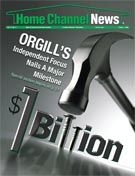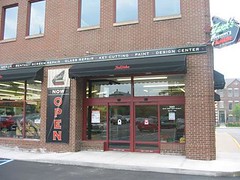I read Home Channel News so you don't have to...
 Ever since I was a kid, I have read trade magazines, the industry specific journals sent to managers and employees. That includes Editor & Publisher when I delivered newspapers, restaurant trade magazines when I first worked in a Big Boy restaurant in high school, and the Ward's Automotive World subscription received by my father, then an engineering design manager for Chrysler Corporation. (Later, while working at CSPI, I ended up reading a lot of marketing, media, and food industry publications, ranging from Advertising Age to Food Technology. When I worked in television, same thing, Broadcasting, Current--the newspaper for the public television industry, Cable World) etc.
Ever since I was a kid, I have read trade magazines, the industry specific journals sent to managers and employees. That includes Editor & Publisher when I delivered newspapers, restaurant trade magazines when I first worked in a Big Boy restaurant in high school, and the Ward's Automotive World subscription received by my father, then an engineering design manager for Chrysler Corporation. (Later, while working at CSPI, I ended up reading a lot of marketing, media, and food industry publications, ranging from Advertising Age to Food Technology. When I worked in television, same thing, Broadcasting, Current--the newspaper for the public television industry, Cable World) etc.Because I am on the board of Community Forklift, I figured that I should learn more about the hardware and building materials industry, so I read Home Channel News.
Yesterday, I read the current issue and learned some interesting stuff. The main feature is about Orgill Corporation, a wholesale distributor, which works with independents. (Many hardware stores work with co-operatives such as True Value or Ace.) The point one of the articles made is that Orgill will work with a customer as much or as little as they want--if you need advertising circulars, they're there, but unlike a co-op, you don't have to pay towards advertising if you don't want to.
Anyway, the two major learnings are that Orgill:
(1) has set up a retail pricing scheme for interested retailers that codes every product on a scale of 1 to 8 in terms of price sensitivity--this allows retailers to compete better with large chains, by adjusting product margins and price competivity product-by-product; and
(2) will work with customers to develop a "Market Specific Pricing" plan that "establishes a retail price-positioning plan customized to an individual store based on local market conditions"--meaning the competition, inlcuding big box stores are evaluated, and products priced, coming up with a plan that "enhances price image and maximizes gross margin dollars."
These are important concepts that other stores can adapt.
Also, the issue has an article about Fusek's Hardware in downtown Indianapolis. This is a new store with a product mix oriented to an urban, rather than a more suburban customer. And they have a nice retro look for their signage, as the photo below makes clear.

While looking for a link to Fusek's website (which, except for this and other photos, is identical to other True Value hardware store websites), I was looking at the website for the National Retail Hardware Assocation. They publish a trade magazine also (which I signed up for...) and offer on their website an extensive collection of "Retail Tips and Strategies"--downloadable articles from their archives on 13 different areas of interest, ranging from loss prevention to merchandising. Even though the articles target hardware stores, retailers in other categories will likely find a lot of good advice.
Index Keywords: commercial-district-revitalization



0 Comments:
Post a Comment
<< Home